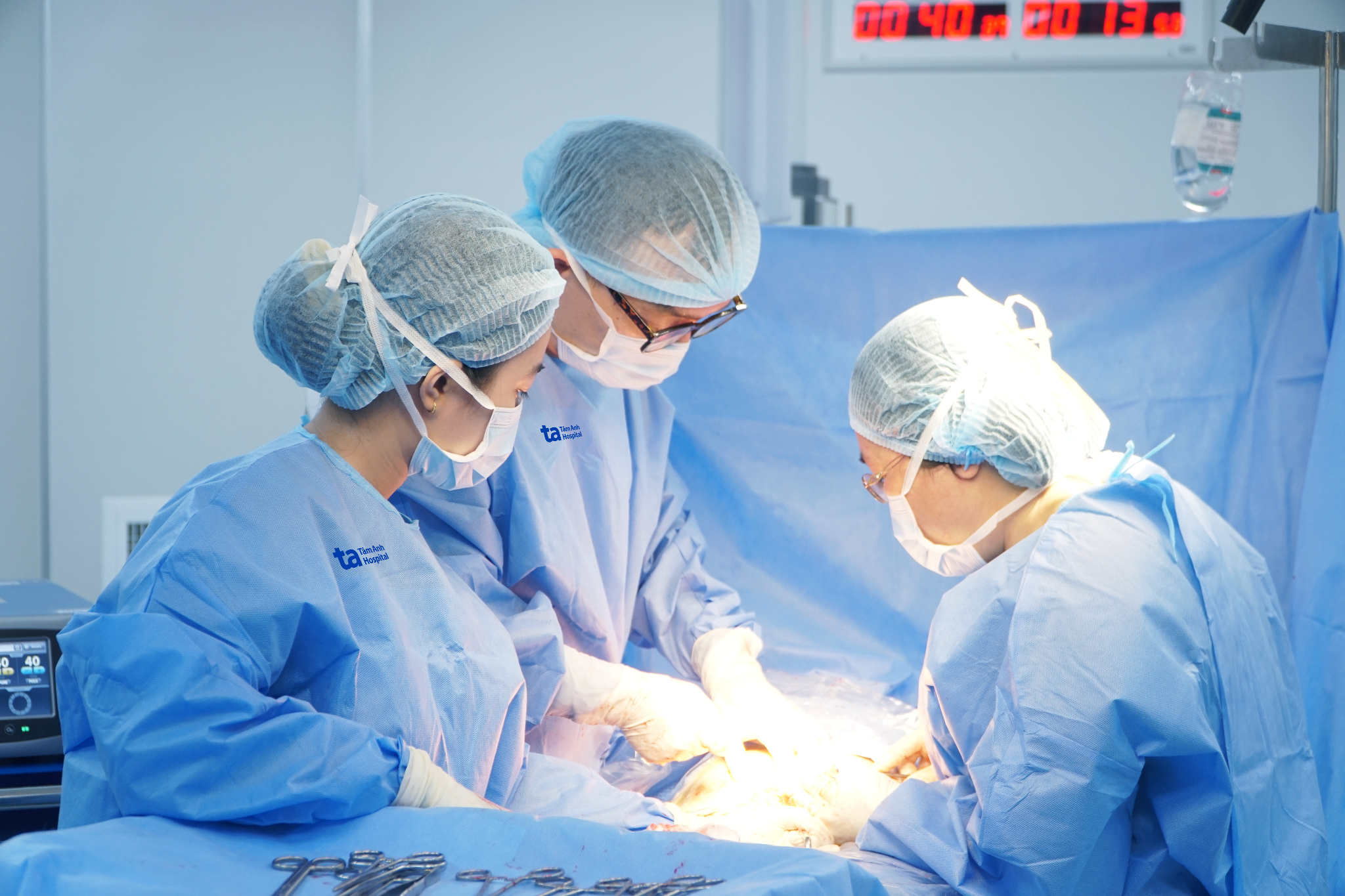After 13 years of infertility following the birth of her first child, Quynh, 33, underwent surgery last year to remove a blocked fallopian tube. She then conceived twins through in-vitro fertilization. While taking aspirin to prevent preeclampsia from week 12 and attending regular checkups, one twin measured smaller than expected. At 28 weeks, the larger twin died, while the surviving twin showed signs of intrauterine growth restriction (IUGR), a condition where a baby doesn't grow to a normal weight during pregnancy, unusually early (before 32 weeks).
Doctor Ngo Binh Lua of the Obstetrics and Gynecology Center at Tam Anh General Hospital in Ho Chi Minh City, explained that 11-15% of dichorionic diamniotic twins (where each fetus has its own placenta and amniotic sac, with no direct blood vessel connection) can experience selective intrauterine growth restriction. In such cases, the smaller twin is at a higher risk of death.
Quynh’s case, with one twin dying at 28 weeks and the other experiencing growth restriction, presented a complex challenge. Potential causes included fetal infection due to fever during pregnancy, genetic abnormalities, placental issues, or maternal antibody irregularities.
The surviving twin also experienced mild bleeding in the germinal matrix of the right lateral ventricle of the brain, which carried the risk of further complications, including death before or after birth, or developmental delays. The loss of one twin also increased Quynh’s risk of infection, premature birth, blood clotting disorders, and postpartum hemorrhage. Doctors recommended amniocentesis to determine the cause of the complications, but Quynh and her husband declined. The medical team closely monitored the surviving twin's growth through Doppler ultrasound, fetal heart rate monitoring, and fetal MRI, which showed the brain bleed gradually resolving.
Quynh developed gestational diabetes and was instructed to monitor her blood sugar levels 4 times a day. Doctors advised her on dietary adjustments, including smaller, more frequent meals, limiting carbohydrates and sugars, increasing protein, vegetables, and fiber intake, consuming unsweetened milk, drinking plenty of water, and engaging in light exercise. This helped control her blood sugar, reducing the risks of fetal distress, sudden fetal death, ketoacidosis, hypertension, and life-threatening preeclampsia.
By week 36, doctors determined the surviving twin was sufficiently developed, especially its lungs. Doctor Lua explained that a planned C-section at this stage minimized the risks associated with IUGR and protected Quynh’s health. The baby was born weighing 2.1 kg. A brain ultrasound confirmed the bleeding had resolved, and both mother and baby were healthy.
 |
Doctor Lua (right) and the surgical team performing a C-section. Photo: Ngoc Chau |
Twin pregnancies carry increased risks for both mother and babies, including selective IUGR, stillbirth, premature birth, preeclampsia, and twin-to-twin transfusion syndrome. Dichorionic diamniotic twins, while relatively low-risk among multiple pregnancies, can still face complications. Even with separate placentas and amniotic sacs, one twin may grow slower than the other due to differences in placental quality or location. A weight difference of over 20% can lead to selective IUGR, increasing the risk of stillbirth, according to Doctor Lua.
Twin pregnancies also elevate the risk of preeclampsia, which typically occurs after 20 weeks but can appear earlier and more severely in twin pregnancies. This poses risks of fetal growth restriction, distress, premature birth, and sudden fetal death. For the mother, complications can include eclampsia, HELLP syndrome (a serious liver and blood clotting disorder), multiple organ failure, and even death.
Doctor Lua advises women pregnant with twins to seek regular checkups at specialized medical centers for close monitoring and early detection of potential problems, ensuring optimal care for both mother and babies.
Ngoc Chau
* The patient's name has been changed
| Readers can submit questions about pregnancy and childbirth here for doctors to answer. |












